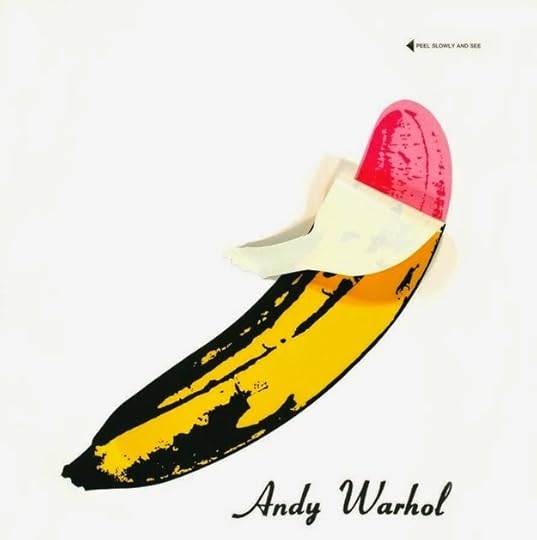R.J. Stowell's Blog: rjsomeone, page 46
June 3, 2019
Relevant Re-Post: When Rock 'n' Roll Became Rock
 Music evolves, goes from 8 track to 16 to digital, takes on a new parlance, someone messes with a Coke can or a hurdy-gurdy, with tape loops and feedback, but 50 years ago, pop music changed its meaning. In July '65, unabashed back-alley hooligans, The Rolling Stones, hit No. 1 with "Satisfaction," a song in which witty complaints about sexual frustration and social hypocrisy sowed the seeds of genuine protest. The next month, Dylan's "Like a Rolling Stone" shot to No. 2, fired by poetic language that spoke of the freedom, and the fear, of leaving social conventions behind. By October it was full tilt with Barry McGuire's "Eve of Destruction," and in December The Who (more riff-raff) released "My Generation," a stammering, in your face, take no shit anthem that drew a violent line in the sand between young and old. The Generation Gap had arrived. To mark so huge a sea change, the sound got a new title — or at least an amended one: the music previously known as "rock 'n' roll" morphed into the emphatic, yet simply named "rock." Like when dungarees became jeans and stayed that way.
Music evolves, goes from 8 track to 16 to digital, takes on a new parlance, someone messes with a Coke can or a hurdy-gurdy, with tape loops and feedback, but 50 years ago, pop music changed its meaning. In July '65, unabashed back-alley hooligans, The Rolling Stones, hit No. 1 with "Satisfaction," a song in which witty complaints about sexual frustration and social hypocrisy sowed the seeds of genuine protest. The next month, Dylan's "Like a Rolling Stone" shot to No. 2, fired by poetic language that spoke of the freedom, and the fear, of leaving social conventions behind. By October it was full tilt with Barry McGuire's "Eve of Destruction," and in December The Who (more riff-raff) released "My Generation," a stammering, in your face, take no shit anthem that drew a violent line in the sand between young and old. The Generation Gap had arrived. To mark so huge a sea change, the sound got a new title — or at least an amended one: the music previously known as "rock 'n' roll" morphed into the emphatic, yet simply named "rock." Like when dungarees became jeans and stayed that way.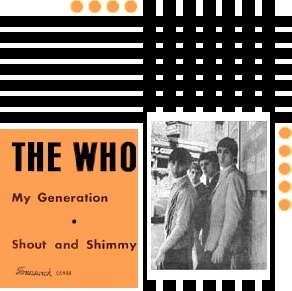 There is only speculation of the term rock 'n' roll, though one sexually explicit ditty comes to mind, Trixie Smith's 1922 "My Man Rocks Me (With One Steady Roll)". Others may suggest the household standard "Rock-a-bye Baby" from 1809 as the term's catalyst, but that's just dumb. Rock, if not sexually motivated, is at a minimum motivated in passion, and it was in 1965 that that that passion became a lifestyle, a movement, a reason to leave home and converge on Frisco bay, to smoke dope and protest the war, to "turn on, drop out and tune in." That phrase wasn't popularized by Leary until '66, but it's this writer's opinion that it was the music, "rock" to be specific, that inspired the events of the Summer of Love and Woodstock and not exclusively the other way around. The Beatles (The Stones, as well and so many more), were a product and a catalyst of their time.
There is only speculation of the term rock 'n' roll, though one sexually explicit ditty comes to mind, Trixie Smith's 1922 "My Man Rocks Me (With One Steady Roll)". Others may suggest the household standard "Rock-a-bye Baby" from 1809 as the term's catalyst, but that's just dumb. Rock, if not sexually motivated, is at a minimum motivated in passion, and it was in 1965 that that that passion became a lifestyle, a movement, a reason to leave home and converge on Frisco bay, to smoke dope and protest the war, to "turn on, drop out and tune in." That phrase wasn't popularized by Leary until '66, but it's this writer's opinion that it was the music, "rock" to be specific, that inspired the events of the Summer of Love and Woodstock and not exclusively the other way around. The Beatles (The Stones, as well and so many more), were a product and a catalyst of their time.It was 50 years ago that rock took on a new significance, one that had been the job of folk and then Dylan went electric to a cacophony of ballyhoo - but for a moment - and then no one cared anymore. We can argue all we want over rock's greatest year, '67? '72?, IDK, everything from Revolver to My Aim is True, but you can't argue that it was '65 when rock got real.
Published on June 03, 2019 12:11
May 29, 2019
Stereo 8
 By 1967, you weren't cool if you didn't have 8-tracks. Born out of our love for the car, cheaply made, cheaply produced (but at album prices) 8-track cartridges came without the lyrics or the inserts (no mustache cut-out for Sgt. Pepper, no lenticular cover for Her Satanic Majesties Request), just portability. The concept, originally known as Stereo 8 was created by a consortium of Lear Jet, Ampex, Ford, General Motors and RCA. Ford started to factory-install 8-Track players as early as 1965 on the Mustang, Thunderbird and Lincoln models, and that same year RCA jump-started 8-Track production by releasing 175 8-Tracks from its RCA Victor catalog.
By 1967, you weren't cool if you didn't have 8-tracks. Born out of our love for the car, cheaply made, cheaply produced (but at album prices) 8-track cartridges came without the lyrics or the inserts (no mustache cut-out for Sgt. Pepper, no lenticular cover for Her Satanic Majesties Request), just portability. The concept, originally known as Stereo 8 was created by a consortium of Lear Jet, Ampex, Ford, General Motors and RCA. Ford started to factory-install 8-Track players as early as 1965 on the Mustang, Thunderbird and Lincoln models, and that same year RCA jump-started 8-Track production by releasing 175 8-Tracks from its RCA Victor catalog. The production/audio quality was rank, the cartridges themselves were cheap and easily broken, and how many of us drove around shoving matchbooks under the tape to make it play correctly (the movable head design was flawed as it was unable to maintain head alignment), still there was something about it; something fabulous about playing the songs you wanted to hear in the car. At times, part one of a song was on a different side than part 2 (such as Joni Mitchell’s "Down to You;" note Asylum's mislabeling as "Down On You"), so the concept took its toll on the integrity of the music, and yet there were occasions when to eliminate negative space, bands added extra content (such as Pink Floyd's Wish You Were Here.) The era of portability was upon us.
And of course, all songs are enhanced by an audible hisssssssss.
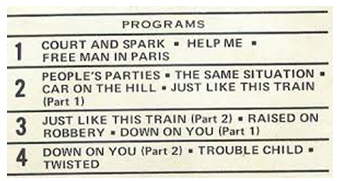
Published on May 29, 2019 09:39
May 22, 2019
Blind Faith
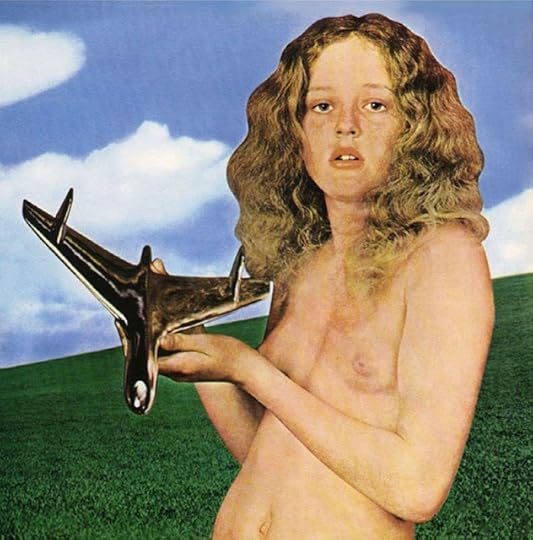 Rock musicians are kind of like a high school clique. This one's friends with that one and then, not so much. That one moves on, hooks up with this one, then the ex comes along… That really was the case in the late 60s with the first rock supergroups, among them, Blind Faith. Ok, so Cream broke up in 1968 and Traffic was on a bit of a hiatus. Eric Clapton and Steve Winwood were milling about; Clapton had played with the Beatles and John Lennon even suggested that Eric join the band on a tense day in which George Harrison essentially quit the Beatles. While still with Traffic, Jimi Hendrix asked Winwood to play organ on "Voodoo Chile."
Rock musicians are kind of like a high school clique. This one's friends with that one and then, not so much. That one moves on, hooks up with this one, then the ex comes along… That really was the case in the late 60s with the first rock supergroups, among them, Blind Faith. Ok, so Cream broke up in 1968 and Traffic was on a bit of a hiatus. Eric Clapton and Steve Winwood were milling about; Clapton had played with the Beatles and John Lennon even suggested that Eric join the band on a tense day in which George Harrison essentially quit the Beatles. While still with Traffic, Jimi Hendrix asked Winwood to play organ on "Voodoo Chile." In early 1969, Ginger Baker joined up with former bandmate, Clapton, and Winwood at Traffic's studio in Berkshire. As the sessions progressed, they, in turn, were joined by Traffic bandmates, Jim Capaldi and Chris Wood. Rumor is, going forward, Clapton would have preferred working with Capaldi than Baker, but the point was moot, neither Capaldi nor Wood was interested in leaving Traffic, though Traffic would break up shortly thereafter. Wait – where's my scorecard? – The group, now consisting of Clapton, Winwood, and Baker was announced as a thing in February 1969 with the trio adding Ric Grech on bass, but still not having a name.
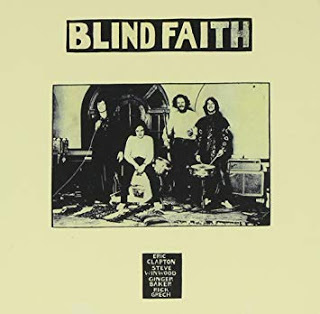 The American IssueThat would come with the controversial photograph that graced the album cover, a nude photograph of a young girl holding the hood ornament of a 1957 Belair. Keep in mind that the only albums up to that point that didn't have the band's name and the title of the LP on the cover had been King Crimson's In the Court of the Crimson King, Abbey Road, Music from the Big Pink and The Velvet Underground and Nico.
The American IssueThat would come with the controversial photograph that graced the album cover, a nude photograph of a young girl holding the hood ornament of a 1957 Belair. Keep in mind that the only albums up to that point that didn't have the band's name and the title of the LP on the cover had been King Crimson's In the Court of the Crimson King, Abbey Road, Music from the Big Pink and The Velvet Underground and Nico.Photographer, Bob Seidermann, had in his mind what he wanted to capture. In many an article, he has tried to explain the concept, but it seems to be something that was just there in his mind and he could only express it visually. Despite the nudity of the cover, Seiderman was hoping to express innocence in the form of a girl as young as Shakespeare's Juliet, in this case, an 11-year-old. The photograph was of Mariora Goschen who was paid £40. Seidermann was given consent for the photograph by Goschen’s parents. He ultimately called the photograph "Blind Faith," which of course would become the band's name.
Blind Faith's most famous track, "Can't Find My Way Home" was written by Winwood and is one of those tracks that nearly everybody knows, but no one knows who it’s by, despite Winwood's unmistakable vocal. Without much rehearsal time behind them, Blind Faith would play a free concert on June 7, 1969, at London’s Hyde Park. It would be the biggest concert ever held up to that point with upwards of one hundred thousand in attendance, a record that would, of course, be shattered by Woodstock's half a million strong less than two months later. And keep in mind that in 1969, Winwood was 21, Clapton 24, Grech 22 and Ginger Baker the old man at 27.
Blind Faith would only produce one LP. Clapton would go on to Delaney and Bonnie, Derek and the Dominoes and his solo career, Winwood would return for Traffic's best jams, while Baker formed another supergroup, Ginger Baker's Air Force with Grech, Denny Laine from The Moody Blues, who would go on to work with McCartney and Wings, and Alan White who would move on to Yes.
Did you get all that?
Published on May 22, 2019 07:53
May 19, 2019
Eleanor Rigby and Ezra Pound
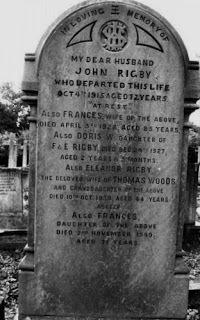 Despite the controversy regarding his Axis support and subsequent subversive broadcasts, Ezra Pound remains one of the most important figures in American and World Poetry. Indeed "Prufrock" and The Waste Land, Dubliners and Portrait of the Artist as a Young Man wouldn't exist without Pound, who, it was noted by Hemingway, only spent a fifth of his energies on his own writing; the rest devoted to writers, from Eliot to Robert Frost to artist Wyndham Lewis. Pound indeed would have been a champion of The Beatles. The poet is said to have "smiled lightly" when he first heard "ER" (Pound's smile came when introduced to The Beatles by Allen Ginsberg); of course he did: two lonely people, living in a church community, cannot connect or associated with their surroundings and those who inhabit them and end up living their lives alone and apart, one burying the other, a grim irony that would be funny if it weren't dreadful. Eleanor dies in church, buried along with her name. Even Ozymandias, despite the "lone and level sands stretch(ing) far away," has his name. In Eleanor Rigby's death we see the death of hope itself, the ultimate tragedy. (Ironically, her name lives on.) It was 50 years ago when Pound extolled the virtues of The Beatles and published The Cantos. He would die, free but insane, in 1972.
Despite the controversy regarding his Axis support and subsequent subversive broadcasts, Ezra Pound remains one of the most important figures in American and World Poetry. Indeed "Prufrock" and The Waste Land, Dubliners and Portrait of the Artist as a Young Man wouldn't exist without Pound, who, it was noted by Hemingway, only spent a fifth of his energies on his own writing; the rest devoted to writers, from Eliot to Robert Frost to artist Wyndham Lewis. Pound indeed would have been a champion of The Beatles. The poet is said to have "smiled lightly" when he first heard "ER" (Pound's smile came when introduced to The Beatles by Allen Ginsberg); of course he did: two lonely people, living in a church community, cannot connect or associated with their surroundings and those who inhabit them and end up living their lives alone and apart, one burying the other, a grim irony that would be funny if it weren't dreadful. Eleanor dies in church, buried along with her name. Even Ozymandias, despite the "lone and level sands stretch(ing) far away," has his name. In Eleanor Rigby's death we see the death of hope itself, the ultimate tragedy. (Ironically, her name lives on.) It was 50 years ago when Pound extolled the virtues of The Beatles and published The Cantos. He would die, free but insane, in 1972.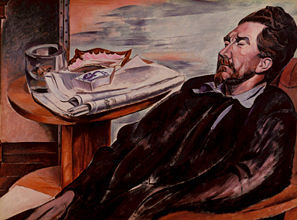 Ezra Pound by Wyndham LewisThe story of "ER" is typical of Paul with its two functioning, unrelated characters brought into ironic proximity in the final scene, as though it were a novel by Bronte, and a precursor to "Penny Lane." One can't help but sense the influence of John upon Paul's particular choices of detailed imagery and idiosyncratic turns of phrase. The song avoids sentimentality by keeping its distance from the subject, presenting the action like a film script: "Look at him working," and uses various tense to imply shift in perspective: Eleanor Rigby "died in the church" (past tense), while in the same scene, Father MacKenzie is "wiping the dirt from his hands" (present tense).
Ezra Pound by Wyndham LewisThe story of "ER" is typical of Paul with its two functioning, unrelated characters brought into ironic proximity in the final scene, as though it were a novel by Bronte, and a precursor to "Penny Lane." One can't help but sense the influence of John upon Paul's particular choices of detailed imagery and idiosyncratic turns of phrase. The song avoids sentimentality by keeping its distance from the subject, presenting the action like a film script: "Look at him working," and uses various tense to imply shift in perspective: Eleanor Rigby "died in the church" (past tense), while in the same scene, Father MacKenzie is "wiping the dirt from his hands" (present tense).When Paul McCartney first wrote "ER" he had the music worked out before the lyrics, as he often did ("Yesterday," remember, started out as "Scrambled Eggs"). Paul often used placeholder lyrics that he'd subsequently abandon. To be specific, the original version began, "Ola Na Tungee/ Blowing his mind in the dark/ With a pipe full of clay/ No one can say." In other words, a guy with a quasi-Hindu name getting high, a far cry from the English Village equivalent to Desolation Street. Paul later picked the name Rigby from a wine and spirits shop in Bristol, and the name Eleanor in reference to the British actress, Eleanor Bron, who appeared in Help! The priest was originally named Father McCartney, but John's friend Pete Shotton warned that people would think he was talking about his own father. George reportedly contributed the line "Ah look at all the lonely people," while Ringo contributed the idea of having Father McKenzie darning his socks in the night. There are of course many course one may take analyzing the iconic single, and a day's worth of interesting research is in store for those who try. Ultimately, despite the subjective nature of the lyrics, Eleanor Rigby exists, at least in name; indeed at the cruelly young age of 44, Eleanor Rigby died in the same house where she had been born, was interred in the graveyard of St Peter's Church in Liverpool, and had her name added prominently on an increasingly crowded headstone. The story, its evolution and its ties to history are fascinating.
In 1964, the Beatles held the top 5 positions on Billboard's Hot 100. On April 4th of that year, "Can't Buy Me Love" was No. 1, followed by "Twist and Shout," "She Loves You," "I Wanna Hold Your Hand" and "Please Please Me." It was an accomplishment which can never be equaled, but from August 1966 through the end of 1967, the Beatles were at the top of the chart in a myriad of categories. In August '66, Rubber Soul was the No. 1 album, and would remain so for eight weeks, with the double A sided "Yellow Submarine/Elenor Rigby" at the top of the singles charts for four weeks. Between January 1967 and the end of the year, the Beatles remained at the top of the charts with the release of three additional LPs, Revolver and Sgt. Pepper, followed by the EP release worldwide and the full length LP as released by Capitol in the U.S. of Magical Mystery Tour. The singles release during this period were: "Penny Lane/Strawberry Fields" (which made it only to No. 2, based on The Monkees' "I'm a Believer"); "All You Need is Love" and "Hello Goodbye." Imagine four unparalleled LPs with two solid No. 1 singles in a little over a year, all from the same band!
Published on May 19, 2019 07:15
May 16, 2019
More on Collecting - For Fun - Not For Profit
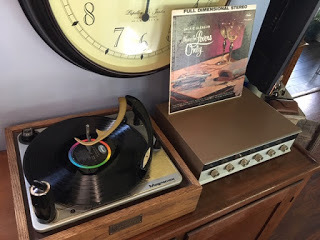 For me collecting LPs enhances the musical experience and history. And although when I'm away, I listen to Spotify like everyone else, when I'm home I sit down and put on the phonograph (for me, a 1961 Magnavox). Some will argue the richness of vinyl, particularly through an old vacuum tube receiver, and while that may be true for me as well, I'm more about the aesthetics of the format: the music, coupled with the jacket and the lyrics, is something we never got with CDs and their jewel cases, and certainly, something we don't get with digital music. (And aside from the aesthetics, how, exactly, do kids today roll a joint without a gatefold cover?)
For me collecting LPs enhances the musical experience and history. And although when I'm away, I listen to Spotify like everyone else, when I'm home I sit down and put on the phonograph (for me, a 1961 Magnavox). Some will argue the richness of vinyl, particularly through an old vacuum tube receiver, and while that may be true for me as well, I'm more about the aesthetics of the format: the music, coupled with the jacket and the lyrics, is something we never got with CDs and their jewel cases, and certainly, something we don't get with digital music. (And aside from the aesthetics, how, exactly, do kids today roll a joint without a gatefold cover?)Let me make it clear that I am a collector and not an investor. And so, While Ringo Starr's personal copy of the White Album sold at auction for $790,000 in 2015, that's a wee bit out of range for most of us. Ringo's copy was stamped 0000001; the very first issue; in essence, a museum piece. Conversely, I'm pretty proud of my copy,A1412599 in VG+ condition, which is worth about $150. That's extravagant for me.
A signed copy by all four Beatles of Sgt. Pepper recently sold for more than $300,000 and an acetate copy of Elvis Presley's "My Happiness" was bought by Jack White in 2015 for nearly the same amount. I'm sure there are some collectors who have these albums, but for the most part (like Jack White), these are prices associated with investors instead. I like collectors better: those of us who listen to our records, who put them on the phonograph and keep them alive.
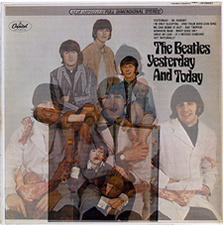 Of course, there are still big guns for the average collector. A sealed copy of the Beatles Yesterday and Today in its first state recently sold for $125,000; unsealed copies of the LP range from$150 to more than $10,000. First State copies are those with the Beatles in medical garb with baby dolls and blood splattered over them. The record was released in both stereo and mono versions with 10 times as many mono versions printed, and obviously, the stereo version commands a higher price. These are the ones that can range up to six figures. Second state LPs, often called paste-overs, had a more tasteful cover glued over the original with a photograph of Paul sitting in an open travel trunk and the other Beatles standing around him. You can see the original image bleeding through the paste-over in a kind of pentimento, an art term that means being able to see what's underneath before the artist finished his work. Depending upon the condition, unpeeled copies are also among the most valuable collectibles.
Of course, there are still big guns for the average collector. A sealed copy of the Beatles Yesterday and Today in its first state recently sold for $125,000; unsealed copies of the LP range from$150 to more than $10,000. First State copies are those with the Beatles in medical garb with baby dolls and blood splattered over them. The record was released in both stereo and mono versions with 10 times as many mono versions printed, and obviously, the stereo version commands a higher price. These are the ones that can range up to six figures. Second state LPs, often called paste-overs, had a more tasteful cover glued over the original with a photograph of Paul sitting in an open travel trunk and the other Beatles standing around him. You can see the original image bleeding through the paste-over in a kind of pentimento, an art term that means being able to see what's underneath before the artist finished his work. Depending upon the condition, unpeeled copies are also among the most valuable collectibles. 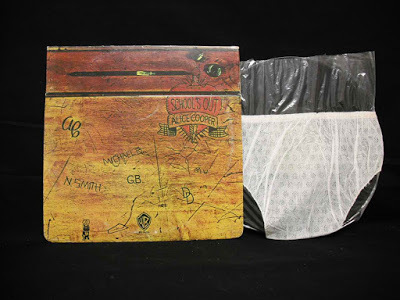 Third state covers are those that had the butcher cover and the correction, but the consumer removed or partially removed the paste-over. I have a copy of that third state in nice condition that if I were to buy it today would set me back some $500. That's a bit rich for my blood, but I was lucky enough to buy it years ago for what I thought, then, was far too much. Records like these are a real extravagance for me. Similar collectibles are on my wishlist, my win the lottery list, but each year I increase that collection of luxuries by one or two. (I'm honestly more the look what I found for a dollar collector. Last week I picked up four late 60s Conway Twitty LPs in very-good-plus condition for a dollar apiece. They're worth five to fifteen dollars each and so it was a great score, and obviously in my price range.)
Third state covers are those that had the butcher cover and the correction, but the consumer removed or partially removed the paste-over. I have a copy of that third state in nice condition that if I were to buy it today would set me back some $500. That's a bit rich for my blood, but I was lucky enough to buy it years ago for what I thought, then, was far too much. Records like these are a real extravagance for me. Similar collectibles are on my wishlist, my win the lottery list, but each year I increase that collection of luxuries by one or two. (I'm honestly more the look what I found for a dollar collector. Last week I picked up four late 60s Conway Twitty LPs in very-good-plus condition for a dollar apiece. They're worth five to fifteen dollars each and so it was a great score, and obviously in my price range.) In future posts I'll elaborate, but for now, here's one of my favorites, an LP that in great condition, will usually fetch 100 bucks. But look around for a bargain. I got mine on eBay for $35. It's Alice Cooper's School’s Out. Aside from being among Alice Cooper's best, the cover looks like a scarred up school desk from an old high school with the album's title scratched into the wood surface along with other graffiti. The bottom corners are rounded off, just like those old desks. And the fun part? The original LP came with a pair of cotton panties, some green, some white, some pink.* The vinyl was adorned with the panties inside the LP. School's Out is my unofficial album of early summer. As a school teacher for 30 years, I was just as excited as everybody else when school was indeed out for summer, out till Fall. I'll get it out of the special cabinet I have reserved for my true collectibles, put it on the phonograph and crank it up every year as May turns to June. The panties my vinyl wears are pink. It's collectibles like these - fun, rare, great rock 'n' roll to boot - that truly make having a growing vinyl collection
*Watch out for imposters on eBay, though. The panties are what increase the value and often you'll see posted offers that include a facsimile artifact, but are not original.
Published on May 16, 2019 06:22
May 10, 2019
An LP Mistakenly Called Andy Warhol
 Edie Sedgwick and Gerard MalangaThe AM score for The Velvet Underground & Nico is a 10 (historically, one of the first). From a rubric standpoint, there are those who would reject such lofty praise, and there are indeed arguable realities: the musicianship (including Nico's vocals) is ofttimes amateurish (read that as the VU just couldn't play their instruments), and the production values and sound are sorely questionable; this isn't merely a garage sound, it verges on bootleg quality. Here, the rubric suffers in that the album is beyond reproach in terms of songwriting, influence and longevity. Retrospectively we (I speak for all of us) would change nothing. Still, no matter my opinions or the rubric's inadequacies, the album as reviewed in the Village Voice in 1967 more than questioned its value – and suggested that there was justification for the album selling a mere 30,000 copies by 1970:
Edie Sedgwick and Gerard MalangaThe AM score for The Velvet Underground & Nico is a 10 (historically, one of the first). From a rubric standpoint, there are those who would reject such lofty praise, and there are indeed arguable realities: the musicianship (including Nico's vocals) is ofttimes amateurish (read that as the VU just couldn't play their instruments), and the production values and sound are sorely questionable; this isn't merely a garage sound, it verges on bootleg quality. Here, the rubric suffers in that the album is beyond reproach in terms of songwriting, influence and longevity. Retrospectively we (I speak for all of us) would change nothing. Still, no matter my opinions or the rubric's inadequacies, the album as reviewed in the Village Voice in 1967 more than questioned its value – and suggested that there was justification for the album selling a mere 30,000 copies by 1970:Village Voice, April 13, 1967 The Velvet Underground is not an easy group to like. Some of the cuts on their album are blatant copies: I refer specifically to the progression lifted from the Rolling Stones "Hitchhike" in "There She Goes Again." The lead vocal on other songs sound distressingly like early Dylan. Some of the mterial [sic] is dull and repetitive. And the last two cuts, "Black Angel's Death Song" and "European Son" are pretentious to the point of misery.
But the Velvets are an important group, and this album has some major work behind that erect banana on the cover. "I'm Waiting for the Man" is an impressively understated vignette about scoring in Harlem. "Venus in Furs" is fine electronic mood-manifesting. "Femme Fatale" is an unearthly ballad subtly fuzzed-up to drive you mad fiddling with bass and treble switches. Nico's voice is harrowing in its pallor, but chic, very chic.
Most important is the recorded version of "Heroin," which is more compressed, more restrained than live performances I have seen. But it's also a more realized work. The tempo fluctuates wildly and finally breaks into a series of utterly terrifying squeals, like the death rattle of a suffocating violin. "Heroin" is seven minutes of genuine 12-tone rock 'n' roll.
- Richard Goldstein
Wow, really? – "pretentious to the point of misery." Wow. Here then, is the AM review:
 The Velvet Underground and Nico
(AM10)Artist: Velvet UndergroundProduced by: Andy Warhol, Tim WilsonReleased: March 12, 1967Length: 48:51Tracks: 1) Sunday Morning (2:54); 2) I’m Waiting For the Man (4:39); 3) Femme Fatale (2:38); 4) Venus in Furs (5:12); 5) Run Run Run (4:22) 6) All Tomorrow’s Parties (6:00); 7) Heroin (7:12); 8) There She Goes Again (2:41); 9) I’ll Be Your Mirror (2:14) 10) The Black Angel’s Death Song (3:11) 11) European Son (7:46)Players: Lou Reed – lead guitar, vocals; Sterling Morrison – guitars, bass; John Cale – bass, keyboards, guitar, electric viola, backing vocals, hissing; Maureen Tucker – percussion; Nico – Vocals
The Velvet Underground and Nico
(AM10)Artist: Velvet UndergroundProduced by: Andy Warhol, Tim WilsonReleased: March 12, 1967Length: 48:51Tracks: 1) Sunday Morning (2:54); 2) I’m Waiting For the Man (4:39); 3) Femme Fatale (2:38); 4) Venus in Furs (5:12); 5) Run Run Run (4:22) 6) All Tomorrow’s Parties (6:00); 7) Heroin (7:12); 8) There She Goes Again (2:41); 9) I’ll Be Your Mirror (2:14) 10) The Black Angel’s Death Song (3:11) 11) European Son (7:46)Players: Lou Reed – lead guitar, vocals; Sterling Morrison – guitars, bass; John Cale – bass, keyboards, guitar, electric viola, backing vocals, hissing; Maureen Tucker – percussion; Nico – VocalsAbrasive, dark and beautiful, the crazy ole Velvet Underground is soft like no velvet anyone's ever touched. In their shiny boots of leather you find a mixed up comfort. In their harmonies, lyrics and driving rhythms there's a nexus between all the ways we want to be hip and great and loved, and the ways we never can.
As the story goes, March 12, 1967 inarguably represents the birth of punk. Nothing else in the era compares with the VU debut. This wasn't evolutionary. The Beatles and Brian Wilson used the studio as a catalyst for their growth and artistry. Elvis tamed the raunchy alleyways of the blues; peppered it with country. But The Velvet Underground and Nico was the equivalent of skipping all the Mercury and Gemeni nonsense and blasting off to the moon with a rocket strapped to your back.
The album is riddled with a kind of nightmarish heroin dream. Songs like "Waiting For The Man" and "All Tomorrow's Parties" drive us to sway or to dance because we can. They bring us as close to tasting the underbelly of mixed up chemical love as any art ever could. "Heroin" is a crazy, Red Shoes, grim reaper's dance: the droning strings, rhythmic feedback, and twisting drums whirling to an unbridled cadence. Imagine for a moment that you are hearing this album for the first time without ever having anything to color your perception of it. Let in the other-worldliness, the beauty, like the sound of a breaking heart, the angst like all humanity simultaneously screaming to God, the desperate search for meaning in the vastness of the cosmos. OK, nix that. The Velvet Underground and Nico is too real, too empty to be anything less than art beyond reproach or comparison. This isn’t MTV; it’s empty-V.
Published on May 10, 2019 16:14
May 9, 2019
Warhol's Banana
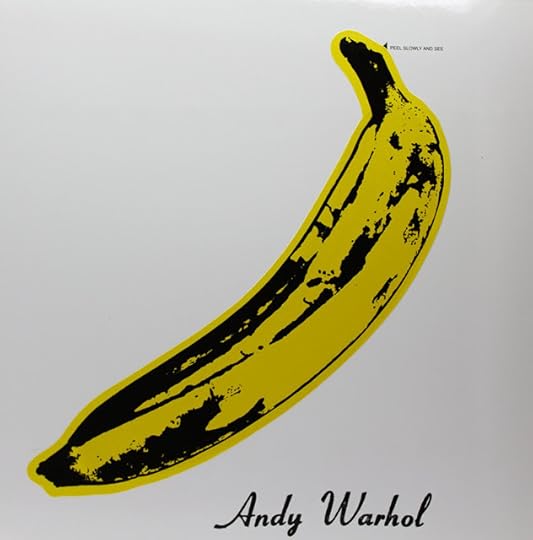 Andy Warhol was a master of reinterpreting the images and resources around him. Building on the Dadaist ideas of Marcel Duchamp, Warhol took American graphic design, from newspaper clippings to magazine headlines to something in his fridge, and transformed it into art. But one piece of Warhol's work has never been traced back to an original source… until now – Warhol's iconic Banana cover for The Velvet Underground and Nico.
Andy Warhol was a master of reinterpreting the images and resources around him. Building on the Dadaist ideas of Marcel Duchamp, Warhol took American graphic design, from newspaper clippings to magazine headlines to something in his fridge, and transformed it into art. But one piece of Warhol's work has never been traced back to an original source… until now – Warhol's iconic Banana cover for The Velvet Underground and Nico.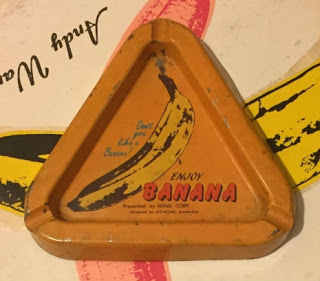 The album, which featured a banana skin you could physically peel, is amongthe most collectible LPs. Danzig member Howie Pyro revealed in an op-ed piece that he accidentally stumbled upon the original banana in a junk shop "in the mid-80s" in the Lower East Side of New York, only realizing recently what it meant to rock and NYC history. "There was one on Broadway that I had never seen before right down the street from Forbidden Planet and the greatest place ever, the mighty Strand Book Store. I went in and there was a lot of great stuff for me. I found some old records, a huge stash of outrageous and disgusting tabloid newspapers from the sixties which I kept buying there for a couple months afterward, and some cool old knick-knacks.
The album, which featured a banana skin you could physically peel, is amongthe most collectible LPs. Danzig member Howie Pyro revealed in an op-ed piece that he accidentally stumbled upon the original banana in a junk shop "in the mid-80s" in the Lower East Side of New York, only realizing recently what it meant to rock and NYC history. "There was one on Broadway that I had never seen before right down the street from Forbidden Planet and the greatest place ever, the mighty Strand Book Store. I went in and there was a lot of great stuff for me. I found some old records, a huge stash of outrageous and disgusting tabloid newspapers from the sixties which I kept buying there for a couple months afterward, and some cool old knick-knacks."I knocked into something on a crowded table full of junk and heard a big CLANG on the cement floor. I bent down to pick it up. It was one of those cheap triangular tin ashtrays that usually advertised car tires or something mundane. I picked it up (it was face down) and when I turned it over I was surprised to see…THE BANANA!"
Published on May 09, 2019 14:22
May 6, 2019
The Beatles on Vee Jay Records - More About Collectibles
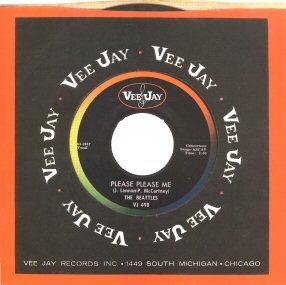 As a collector (in my case 45s), one looks into the history the way others could care less. Collectors of anything know that the obscure is the score, and for Beatles' fans, one can't go wrong with the 45s released by Vee Jay, a fledgling record company out of Chicago and the first African American owned label. Founded in 1953 by Vivian Carter (the "Vee") and her husband, Jimmy Bracken (the "Jay") in Gary, Indiana, Vee Jay contributed a tremendous catalog of blues, rhythm and blues, doo-wop, jazz, soul, pop, and rock 'n' roll. The label started as an outgrowth of the Bracken's successful record shop, and Vivian's stint as a disc jockey at WGRY. The black music Vivian was playing on her radio show at the time was not generally available on records.
As a collector (in my case 45s), one looks into the history the way others could care less. Collectors of anything know that the obscure is the score, and for Beatles' fans, one can't go wrong with the 45s released by Vee Jay, a fledgling record company out of Chicago and the first African American owned label. Founded in 1953 by Vivian Carter (the "Vee") and her husband, Jimmy Bracken (the "Jay") in Gary, Indiana, Vee Jay contributed a tremendous catalog of blues, rhythm and blues, doo-wop, jazz, soul, pop, and rock 'n' roll. The label started as an outgrowth of the Bracken's successful record shop, and Vivian's stint as a disc jockey at WGRY. The black music Vivian was playing on her radio show at the time was not generally available on records. The Brackens decided to start recording these artists, and Vee Jay was born. Quickly the Vee Jay catalog included a wealth of blues recordings by Eddie Taylor, Snooky Pryor, John Lee Hooker, Big Joe Williams and Elmore James. The label regularly issued jazz albums by Wynton Kelly, Wayne Shorter, Eddie Harris, Lee Morgan, and gospel with the early recordings of the Staple Singers. Young unknowns David Gates (of Bread), Hoyt Axton and Jimi Hendrix briefly appeared on the label as well, as did Little Richard. As a result, Vee Jay attained national attention in September 1962, with the smash hit "Sherry" by the Four Seasons. The group would go on to have ten top 40 hits for the label.
 Vee Jay was now a potent force within the record industry. EMI, the British record company with ties to the U.S. Capitol label, approached Vee Jay in Summer 1962, after Capitol had used their right of first refusal to turn down the artists EMI had offered; yes, The Beatles. The Beatles then recorded "Love Me Do" in September, a few weeks after the deal that contracted the group to Vee Jay, and the single hovered in the twenties of the English charts from November to January. The Beatles' next single, "Please Please Me" b/w "Ask Me Why" hit No. 1 in March 1963. When it reached No. 2 in early February, Vee Jay decided to release the single in the US, which they did on 25 February 1963 (VJ 498). The song got some airplay from Chicago top 40 giant WLS, and was placed on their top 40 charts for two weeks, making it the first local top 40 appearance for the group in the US. Ironically, the group was so unknown that their name was misspelled as "Beattles" on the record label and the top 40 charts. Here's the collector’s part. VJ498 in mint condition can sell for upwards of ten grand! It was the first true Beatles single to be released in the U.S. The Decca single, "My Bonnie"/ "The Saints" (Decca 31382), released in early 1962, merely features the Beatles as a backup band to Tony Sheridan (six grand, btw – I own any of these, btw). But poor, mom and pop style, business practices led to a troubled label.
Vee Jay was now a potent force within the record industry. EMI, the British record company with ties to the U.S. Capitol label, approached Vee Jay in Summer 1962, after Capitol had used their right of first refusal to turn down the artists EMI had offered; yes, The Beatles. The Beatles then recorded "Love Me Do" in September, a few weeks after the deal that contracted the group to Vee Jay, and the single hovered in the twenties of the English charts from November to January. The Beatles' next single, "Please Please Me" b/w "Ask Me Why" hit No. 1 in March 1963. When it reached No. 2 in early February, Vee Jay decided to release the single in the US, which they did on 25 February 1963 (VJ 498). The song got some airplay from Chicago top 40 giant WLS, and was placed on their top 40 charts for two weeks, making it the first local top 40 appearance for the group in the US. Ironically, the group was so unknown that their name was misspelled as "Beattles" on the record label and the top 40 charts. Here's the collector’s part. VJ498 in mint condition can sell for upwards of ten grand! It was the first true Beatles single to be released in the U.S. The Decca single, "My Bonnie"/ "The Saints" (Decca 31382), released in early 1962, merely features the Beatles as a backup band to Tony Sheridan (six grand, btw – I own any of these, btw). But poor, mom and pop style, business practices led to a troubled label. The Beatles' third British single, "From Me To You," flew up the English charts with astonishing speed, making No. 1 in only three weeks and staying atop the charts for six. Something along the lines of phenomenal was in the making. Vee Jay released the single (VJ 522) on 27 May 1963. It was made "Pick Of the Week" by Cash Box magazine, but by then, Vee Jay was in a serious business management crisis, most significantly due to a lawsuit filed by The Four Seasons.
The Beatles' third British single, "From Me To You," flew up the English charts with astonishing speed, making No. 1 in only three weeks and staying atop the charts for six. Something along the lines of phenomenal was in the making. Vee Jay released the single (VJ 522) on 27 May 1963. It was made "Pick Of the Week" by Cash Box magazine, but by then, Vee Jay was in a serious business management crisis, most significantly due to a lawsuit filed by The Four Seasons.Based on the label's allegedly shady accounting practices, The Beatles next single "She Loves You"/ "I'll Get You" (Swan 4152 - $45), was sent to the even smaller Swan label, which was founded in the late 1950s in Philadelphia. It was issued on September 16, 1963, just after the UK single. Despite their financial issues, Vee Jay issued the Beatles first album, which had been available since March in the UK (Please Please Me), changing the album title to Introducing the Beatles (VJLP 1062). In an interesting move, Vee Jay removed "Please Please Me" and "Ask Me Why" from the record and added "Love Me Do" and "P.S. I Love You," meaning none of the songs on the album had been issued previously in the U.S. The album was allegedly issued in July 1963, although, while copies may have been pressed early on, the album didn't appear in stores until 1964, Vee Jay issuing, but not supporting, its release. (The LP, btw, is one of the most counterfeited albums of all time. If you have one and the "The Beatles" is printed above the center hole, it may be real - more investigation is required. If it is printed below the center hole, it is fake; you don't have to go any further, except to know that even counterfeit copies have value. If the vinyl is real, the cover may not be, so you will have to research that as well. I just point this out because it's one of the intriguing circumstances that make recording collecting fun.)
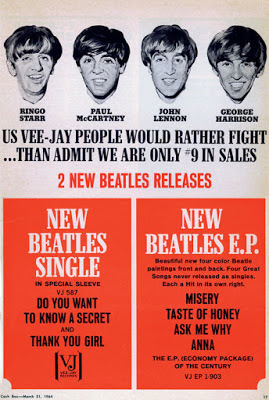 In late 1963, Capitol Records launched the largest promotional campaign in music history. "The Beatles Are Coming" was plastered everywhere. "I Want To Hold Your Hand"/ "I Saw Her Standing There" (Capitol 5112) was released December 26, 1963. The latter song was one already in possession of Vee Jay, as a part of Introducing the Beatles. "I Want To Hold Your Hand" hit the No. 1 spot in all three charts on January 13, 1964. Based on continued contract disputes, EMI, through Capitol, sued Vee Jay to cease and desist its sales of Introducing. Dragging their heels to comply with any court interference, Vee Jay continued to press copies of the LP well into 1964; by then The Beatles were the most famous foursome in the world. Based on the number of pressings, the LP’s value averages out at about $30 for a VG to Mint condition copy, though a Mint version of the stereo pressing can go for upwards of $500.
In late 1963, Capitol Records launched the largest promotional campaign in music history. "The Beatles Are Coming" was plastered everywhere. "I Want To Hold Your Hand"/ "I Saw Her Standing There" (Capitol 5112) was released December 26, 1963. The latter song was one already in possession of Vee Jay, as a part of Introducing the Beatles. "I Want To Hold Your Hand" hit the No. 1 spot in all three charts on January 13, 1964. Based on continued contract disputes, EMI, through Capitol, sued Vee Jay to cease and desist its sales of Introducing. Dragging their heels to comply with any court interference, Vee Jay continued to press copies of the LP well into 1964; by then The Beatles were the most famous foursome in the world. Based on the number of pressings, the LP’s value averages out at about $30 for a VG to Mint condition copy, though a Mint version of the stereo pressing can go for upwards of $500. Although Vee Jay sold over 2.5 million LPs in one month, they could not keep up the demand or pay their artists' royalties. With ongoing lawsuits from The Four Seasons and Capitol Records, the label shut its doors mid-1964. Interestingly, the last single released from the failing company was Little Richard in gospel mode ("I Don't Know What you've Got, But It's Got Me") featured a very young Jimi Hendrix on guitar.
The Vee Jay pressings of the early Beatles catalog are just a small part of The Beatles' storied international sales.
Published on May 06, 2019 06:31
May 3, 2019
Buy The Book
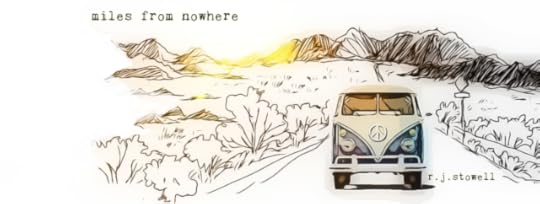
Last week there were 38,500 listeners to the AM broadcast, and many of you readers fit into that category as well. We at AM thank you for your loyalty, for listening, for reading and for writing us with your questions and suggestions. Interestingly, our post from December 2015, "The How Soon is Now Girl," a story that revolves around the iconic Smiths' song, has been our most popular article. If that is indeed the type of journalism you're after...
Read the Book! AM, here on the web and on the radio, is sponsored by your patronage through the sale of R.J. Stowell's novel, Miles From Nowhere (and from Jay and the Americans). We've arranged for you to read Miles on Kindle Unlimited FREE, while the Kindle edition for those of you without KU is just $2.99. The trade edition is $10.99.
And here's a new offer because you've asked. Now you can get a personally signed edition of either novel for just $19.99. I will sign the novel to you or a loved one with a personal note. Send an email to this link:
rjsomeone@gmail.com
Published on May 03, 2019 07:16
April 29, 2019
10 LPs... - Part 2
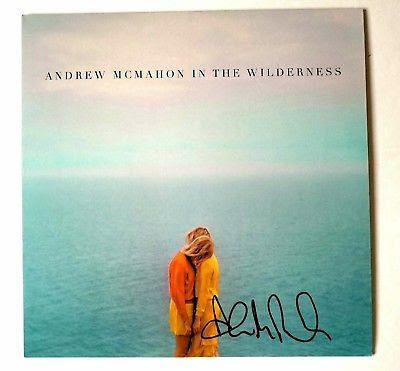 5. Dark Side of the Moon. I know. This wasn't supposed to be about specific LPs. It was supposed to take an eclectic approach and ferret out those must-haves everyone shoves down your throat in an effort to replace them with LPs you'll want to show everybody. Dark Side is the exception. The White Album isn't as personal as Revolver or Pepper, but collector value is more than just financial; it's nearly like owning a work of art. So, The White Album doesn't break these post rules, and while DSOMT does, it's still an LP that everyone should have and most people will want to have in their collection. Frankly, if you don't want it, you're an idiot. Get yourself a classic copy or one on 180-gram vinyl, but get it.
5. Dark Side of the Moon. I know. This wasn't supposed to be about specific LPs. It was supposed to take an eclectic approach and ferret out those must-haves everyone shoves down your throat in an effort to replace them with LPs you'll want to show everybody. Dark Side is the exception. The White Album isn't as personal as Revolver or Pepper, but collector value is more than just financial; it's nearly like owning a work of art. So, The White Album doesn't break these post rules, and while DSOMT does, it's still an LP that everyone should have and most people will want to have in their collection. Frankly, if you don't want it, you're an idiot. Get yourself a classic copy or one on 180-gram vinyl, but get it.4. Get something signed. My wife and I have followed Andrew McMahon since the 90s when he was in Something Corporate. We saw Jack's Mannequin 20 or 30 times over a five year period and if my daughter was to assemble this collection, her "childhood" LP would be Everything in Transit, as the, urg, CD that sat by the stereo. We have a signed CD, a signed copy of an Andrew McMahon in the Wilderness LP and a poster that he signed at a concert we saw in Delray Beach, Florida. If you follow a local band or have the gumption to wait at a tour bus, keep an LP in the car and get your fave local artist to sign it. You'll remember the moment every time you pick it up. Alternately, check out eBay and ETSY and get a signed copy of The Queen is Dead or Pablo Honey, whatever. That'll cost you, but it's worth it.
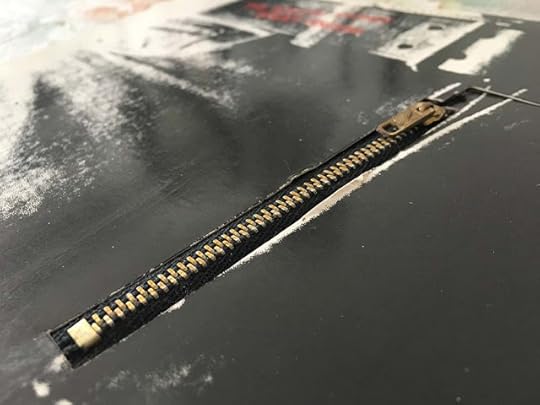 3. Zero in on a go-to LP. For more than 30 years, I've played Peter Gabriel's eponymous first LP as the inaugural vinyl for a new home. This list hopes to keep value in mind. That mint condition LP you love is an investment indeed, but no matter what circumstances you find yourself in, don't ever sell it. Its value is far greater in your collection than out of it. My Peter Gabriel is reasonably valueless – picked up for $3.99 most anywhere, but for me it means "home."
3. Zero in on a go-to LP. For more than 30 years, I've played Peter Gabriel's eponymous first LP as the inaugural vinyl for a new home. This list hopes to keep value in mind. That mint condition LP you love is an investment indeed, but no matter what circumstances you find yourself in, don't ever sell it. Its value is far greater in your collection than out of it. My Peter Gabriel is reasonably valueless – picked up for $3.99 most anywhere, but for me it means "home."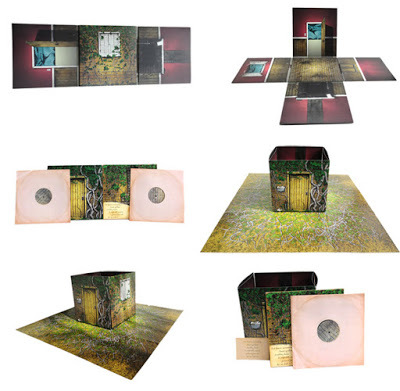 2. An LP with a gadget. You've already got yourself that mint condition favorite LP, now it's time to splurge once again; this time one something truly unique. The LPs that come most readily to mind are the Andy Warhol designed Sticky Fingers and The Velvet Underground and Nico. The first, of course, has a brass zipper on what many, incorrectly, believe is Mick's jeans. And the VU LP has the banana. An original issue of the latter is put into three categories (aside from condition – though condition plays a lessened role): Unpeeled ($$$$), partially peeled ($$$) and peeled ($$). While the monetary value is there, a partially peeled or unpeeled version is far more appealing (forgive me). The 7 inch XTC "No Thugs is Our House," while not an LP, is another great example. A more obscure suggestion is Explosions in the Sky's Take Care, Take Care, Take Care, which folds out into a house in the country that sits on a poster of a green lawn. Others: Zeppelin's Physical Grafitti or LZ3, The Stones' Some Girls, Alice Cooper's School's Out with the pink panties, New Order's Lowlife, Bob Marley's Catch a Fire, Lennon's Walls and Bridges or Kate Bush's three-sided Sensual World (I'll let you discover that oddity on your own).
2. An LP with a gadget. You've already got yourself that mint condition favorite LP, now it's time to splurge once again; this time one something truly unique. The LPs that come most readily to mind are the Andy Warhol designed Sticky Fingers and The Velvet Underground and Nico. The first, of course, has a brass zipper on what many, incorrectly, believe is Mick's jeans. And the VU LP has the banana. An original issue of the latter is put into three categories (aside from condition – though condition plays a lessened role): Unpeeled ($$$$), partially peeled ($$$) and peeled ($$). While the monetary value is there, a partially peeled or unpeeled version is far more appealing (forgive me). The 7 inch XTC "No Thugs is Our House," while not an LP, is another great example. A more obscure suggestion is Explosions in the Sky's Take Care, Take Care, Take Care, which folds out into a house in the country that sits on a poster of a green lawn. Others: Zeppelin's Physical Grafitti or LZ3, The Stones' Some Girls, Alice Cooper's School's Out with the pink panties, New Order's Lowlife, Bob Marley's Catch a Fire, Lennon's Walls and Bridges or Kate Bush's three-sided Sensual World (I'll let you discover that oddity on your own).1. That's it. Now you're on your own. It's easy to find a great mint condition whatever in your local vinyl shop. Just as simple to grade that LP, and pricing guides are available online. But No. 1 relies on your expertise. If we all knew how valuable low-numbered White Albums would be, we wouldn't have trashed them; we wouldn't have peeled the banana off; we'd still have those panties. Take a stab at posterity on your own. What album that today you get for $3.99 will have great value in the future? What's The White Album of 50 years from now? Could be something vintage that no one has grasped yet. Maybe something from the 80s that's cool as hell but its value hasn't caught up yet. Could be something new on 180-gram vinyl – you decide. You're a collector now, show your expertise.
When I posted Part 1 of this topic, comments poured in: "But what are your faves" was the consensus. That kind of screws up the gist, but oh, well, here you go (these are not necessarily my favorite LPs): 10. Sticky Fingers; 9. A Top Flap U.K. pressing, low numbered White Album (I don't have one); 8. Dark Side of the Moon; 7. Mint Led Zeppelin 3; 6. PIL in the silver film can; 5. Alice Cooper's Schools Out with pink panties; 4: Rolling Stones' Her Majesties Satanic Request with the cover lenticular; 3 Unpeeled banana cover; 2. Mono Sgt. Pepper; The Beach Boys' Pet Sounds, also in mono. What's important to note is that tomorrow this list will change; nothing is said and done.
Published on April 29, 2019 08:17

